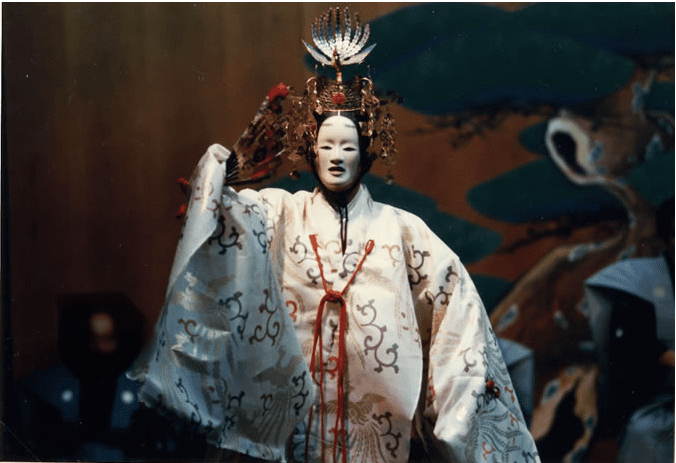English title The Feather Mantle Time spring, at night | Category 3rd — katsura mono Playwright Zeami Motokiyo | |
 | ||
Characters shite angelwaki Hakuryō, a fishermanwakizure companion(s) Similar Izutsu, Atsumori, Funa Benkei, Takasago, Dōjōji | ||
Hagoromo (羽衣, The Feather Mantle) is among the most-performed Japanese Noh plays. It is an example of the traditional swan maiden motif.
Contents
Plot
A fisherman is walking with his companions at night when he finds the Hagoromo, the magical feather-mantle of a tennin (an aerial spirit or celestial dancer) hanging on a bough. The tennin sees him taking it and demands its return—she cannot return to Heaven without it. The fisherman argues with her, and finally promises to return it, if she will show him her dance or part of it. She accepts his offer. The Chorus explains the dance as symbolic of the daily changes of the moon. The words about "three, five, and fifteen" refer to the number of nights in the moon's changes. In the finale, the tennin disappears like a mountain slowly hidden in mist.
Later adaptations
W. B. Yeats' At the Hawk's Well drew extensively from the Hagoromo legend. Osamu Tezuka based a short story in his Phoenix series on the story of the Hagoromo, but with a sci-fi twist, featuring a time displaced human girl from the distant future instead of a tennin. Recently, the story was adapted into the manga and anime series Ceres, The Celestial Legend.
